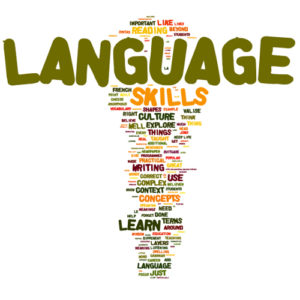I’ ve always been a talker. When I was about three years old, my parents would proudly show off what my dad always called my “proclivity for language” by asking me, in front of visiting company, to say what was then said to be the longest name in the Philadelphia telephone book: Wolfeschlegelsteinhausenbergerdorff. (True story. There’s even a Wikipedia entry about the gentleman’s name—and, yes, my toddler self thought it was a hoot to say.)
ve always been a talker. When I was about three years old, my parents would proudly show off what my dad always called my “proclivity for language” by asking me, in front of visiting company, to say what was then said to be the longest name in the Philadelphia telephone book: Wolfeschlegelsteinhausenbergerdorff. (True story. There’s even a Wikipedia entry about the gentleman’s name—and, yes, my toddler self thought it was a hoot to say.)
So a recent essay in the New York Times caught my attention for multiple reasons: First, the headline—“The Power of Talking to Your Baby.” As established above, I’ve always loved to talk. I love kids. I love talking to my kids who are now adults, and have since they were each first plopped into my arms in the delivery room. (They talked right back, too, early and often. One is now a journalist, and the other, an educator.)
Second, the underlying concept—Talking is powerful, influential, educational. I am a professional wordsmith: I write, therefore I am. And I love to converse with family, friends, colleagues, and even perfect strangers. I’ve always been all about words, starting with elementary school short stories read and written, and the neighborhood newspaper that I pounded out on a manual typewriter at my parents’ kitchen table. That extended through entries penned in my locked Barbie diary, and articles written for every newspaper in every school I attended through college, to my career as a professional writer. Add to that my work as an actor and singer from junior high through the present day.
Third, the less obvious but still important point the piece makes about research—It’s extremely difficult to get funding for detailed, time consuming research on kids, a fact with which I have been familiar since my years studying the target audience for the producers of Sesame Street. Yes, such research is fascinating, highly informative, necessary, and very difficult to get done.
The point of the essay is that there are stunning discrepancies between the exposure to early language for children who grow up poor as compared with children in more well off homes (a difference of some 30 million words by the time a child hits age three), and that these discrepancies might account significantly for differences in subsequent learning abilities and later school performance. One encouraging part of the story is that when parents who might not otherwise realize it are explicitly told that it’s important to talk to their kids frequently from birth on, they are apparently eager to do so.
How can educators build on the power of talk in the classroom and use it to help shape appreciation and comprehension of words in any medium for students of any age? CTL’s Adolescent Literacy Model incorporates and addresses directly the literacy linchpins of reading, writing, speaking and listening. How do these activities play out in your classroom currently—and how might you reinforce their power for your students? Post back, and we’ll discuss. We’ll talk about them!
